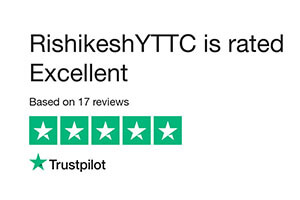500 Hour KUNDALINI Yoga Teacher Training In Rishikesh, India - Overview
Kundalini Yoga, with its roots in ancient Indian traditions, has gained immense popularity for its holistic approach to health and spiritual well-being. The 500-hour teacher training program in Rishikesh stands out as a transformative journey for those seeking a deeper understanding of this profound practice.
In the heart of the yoga capital, Rishikesh, this training goes beyond the basics, offering participants a comprehensive exploration of Kundalini Yoga and its transformative potential.
Opting for both the 200-hour and 300-hour Kundalini Yoga Teacher Training Courses (TTC) separately is a viable option. However, the recommendation is to pursue the complete 500-hour Kundalini Yoga TTC in one go. This approach ensures a comprehensive understanding and practice of all aspects of Kundalini Yoga.
In the 200-hour Kundalini Yoga Teacher Training Course (TTC), participants explore 'Discover Your Chakras' and 'Awaken Your Chakras' as part of the 'Chakra Meditation.' Moving forward to the 300-hour Kundalini Yoga TTC, the focus shifts to 'Balancing Your Chakras' and 'Awakening Your Kundalini' through 'Kundalini Meditation.' However, in the comprehensive 500-hour Kundalini Yoga TTC, participants delve into the entirety of Kundalini Yoga, covering all its facets.
500 Hour KUNDALINI Yoga TTC Time Table Monday to Saturday
- 05:30 AMWAKE UP
- 06:00 to 06:15 AMHERBAL TEA AT DINNING HALL
- 06:15 to 06:30 AMDAILY YOGIC PURFICATION
- 06:30 to 07:00 AMDAILY TRATAK / DAILY OM CHANTING / DAILY GANESH AND GAYATRI MANTRA CHNATING / PRAYER AT YOGA HALL
- 07:00 AM to 08:00 AMPRANAYAMA / YOGIC PURIFICATION / BANDHA / MUDRA
- 08:15 AM to 09:45 AMHATHA YOGA / ALIGNMENT AND ADJUSTMENT
- 09:45 AM to 10:30 AMBREAKFAST AND KARMA YOGA
- 10:30 AM to 11:30 AMSPECIAL COURSE OF GRATITUDE FOR PEACE, HAPPINESS AND ALL POSITIVE RESULTS
- 11:30 AM to 12:30 PMMANTRA CHANTING / AYURVEDA
- 01:00 NOON to 02:30 PMLUNCH AND REST
- 03:30 PM to 04:30 PMPHILOSOPHY WITH SIDDHANT TO DISCOVER YOGA / PATANJALI / CHAKRA / KUNDALINI / SAMADHI
- 04:30 PM to 04:45 PMTEA TIME AND SNACKS
- 04:45 PM to 05:45 PMMEDITATION / CHAKRA AND KUNDALINI YOGA
- 05:45 PM to 07:15 PMASHTANGA VINYASA / ALIGNMENT AND ADJUSTMENT
- 07:15 PM to 08:00 PMDINNER
- 10:00 PMLIGHTS OFF
Sunday is a full day off!
Food and classes will not be avalaible on Sunday (Accomodation is included on Sunday).
500 HOUR KUNDALINI YOGA TEACHER TRAINING IN RISHIKESH, INDIA - UPCOMMING DATES
All Dates Avalable for 2024 - 2024 click on the link bellow to get Quote
200 Hour KUNDALINI Yoga Teacher Training Rishikesh - Syllabus
- JALA NETI
- CATHETER
- KUNJAL KRIYA
- AGNISAARA KRIYA
- SHEETKARMA KAPAL BHATI
- Introduction to pranayama
- Shoulder breathing
- Yogic exhalation
- Inner retention
- Alternative breathing
- Sheetli
- Shitkari
- Introduction to NadiShodhan
- NadiShodhan LABLE 1AND 2
- Introduction to Ratio breathing
- Thoracic breathing
- Yogic inhalation
- Yogic breathing
- Outer retention
- Kapalbhati
- Bhramari
- Ujjayi
- Bhastrika
- NadiShodhan LABLE 3 AND 4
- MOOLA BANDHA
- JALANDHAR BANDHA
- UDDIANA BANDHA
- MAHA BANDHA
- Janaa mudra
- Chin mudra
- Yoni mudra
- Bhairava mudra
- Bhairavi mudra
- Hridaya mudra
- Shambhavi mudra
- Nasikagra mudra
- Kaki mudra
- Yoga mudra
- Ashwini Mudra
- Anapana meditation
- Vipassana meditation LABLE – 1, 2
- Kundalini meditation LABLE - 1
- Chakra meditation LABLE – 1, 2
- Trataka meditation LABLE – 1, 2, 3
- Third eyes meditation LABLE - 1
- Mantra meditation
- Silent meditation LABLE – 1,2,3,4
- SAGUNA MEDITATION
- BODY AWARENESS
- FINDING SENSETION
- FINDING BLOCK SPOT
- YOGA NIDRA LABLE- 1
- MUSCULAR RELAXEATION
- DEEP BREATHING
- TENSE RELAX METHOD
- PARCIAL BODY RELAXATION
- FULL BODY RELAXATION
- MIND RELAXATION
- GURUR BRAHMA GURUR VISSNU
- ASATO MAA SAD GAMAYA
- GAYATRI MANTRA
- MAHA MRITYUNJAYA MANTRA
- CELL
- INTRODUCTION TO CELL
- Panch kosha and its balance
- CELL MEMBRANE
- CELL DIVISION
- RESPIRATORY SYSTEM
- RESPIRATORY TRACK
- MUSCLES OF RESPIRATION
- MECHANISM OF RESPIRATION
- BLOOD SUPPLY TO THE LUNGS
- YOGIC EFFECT ON RESPIRATORY SYSTEM
- CONTROL OF RESPIRATION
- DIGESTING SYSTEM
- SALIVARY GLANDS
- STOMACH AND FUNCTION OF THE STOMACH
- ORGANS OF THE DIGESTING TRACK
- FUNCTION OF THE SMALL INTESTINE AND LARGE INTESTINE
- LIVER EFFECT ON YOGIC PRACTICE
- THORACIC VERTEBRAE
- PANCREAS AND HOW IT EFFECT ON YOGIC PRACTICE
- CIRCULSTORY SYSTEM
- BLOOD AND COMPONENT OF THE BLOOD
- COAGULATION OF BLOOD
- BLOOD CELL
- YOGIC EFFECT ON BLOOD
- FUNCTION OF BLOOD
- BLOOD CIRCULATION
- FUNCTION OF THE HEART
- CONDUCTION OF THE HEART
- HEART BEAT
- PULMONARY SYSTEM
- YOGIC EFFECT ON HEART
- SPINAL COLUMNS
- BONES OF THE TRUNK
- CERVICAL VERTEBRA AND HOW THE YOGIC EFFECT ON IT
- LUMBER VERTEBRAE
- SACRUM AND YOGIC EFFECT ON IT
- 500 HOUR
- CLASSROOM PREPARATION
- CLASSROOM ORGANIZATION
- POSITIVE AND CONCIOUS COMMUNICATION
- CLEAR INSTRUCTION
- TONE OF THE VOICE
- HOW MUCH SAY!
- BE CONCISE
- OFFERING PROPS
- PASSIEVE AND ACTIVE DEMONSTRATION
- OBSERVATION TO INDIVISUAL STUDENT
- (Joint movement Series)- 1,2,3
- Eye Exercise
- Surya namaskara
- Chandra namaskara
- Relaxation Asana
- Shavasana (corpse pose)
- Makarasana (crocodile pose)
- Balasana (child pose)
- Vajrasana Series
- ArdhaUshtrasana (half camel pose)
- Ushtrasana (camel pose)
- Shashankasana ( moon pose)
- Standing Pose
- Tadasana (palm tree pose)
- TiryakaTadasana (swaying palm tree pose)
- Trikonasana (triangle pose)
- Utthanasana (squat and rise pose)
- Kati Chakrasana (waist rotating pose)
- Tiryaka Kati Chakrasana (swaying waist rotating pose)
- Padmasana Series
- BaddhaPadmasana (locked lotus pose)
- Matsyasana (fish pose)
- Backward Bending Asanas
- Shalabhasana (locust pose)
- Dhanurasana (bow pose)
- Bhujangasana (cobra pose)
- TiryakaBhujangasana (twisting cobra pose)
- Chakrasana (wheel pose)
- Kandharasana (shoulder pose)
- Setu Asana (bridge pose)
- Forward Bending Asanas
- Janu Sirshasana (head to knee pose)
- Meru Akarshanasana (spinal bending pose)
- Utthita Janu Sirshasana (standing head between knees pose)
- EkaPadaPadmottanasana (one leg raised to head pose)
- Paschimottanasana (back stretching pose)
- Hasta PadaAngushthasana (finger to toe stretch)
- Spinal Twisting Asanas
- BhuNamanasana (spinal twist prostration pose)
- ArdhaMatsyendrasana (half spinal twist)
- Meru Wakrasana (spinal twist)
- Inverted Asanas
- VipareetaKarani Asana (inverted pose)
- Sarvangasana (shoulder stand pose)
- Sirshasana (headstand pose)
- Padma Sarvangasana (shoulder stand lotus pose)
- Halasana (plough pose)
- Balancing Asanas
- Utthita Hasta Padangusthasana(raised hand to bigtoe pose)
- Utthita Hasta Merudandasana (raised hand and spine pose)
- Merudandasana (spinal column pose)
- Baka Dhyanasana (patient crane pose)
- Garudasana (eagle pose)
- Natarajasana (Lord Shiva'sdance)
- EkaPadasana (one foot pose)
- Advanced Asanas
- Koormasana (tortoise pose)
- Dhanurakarshanasana (archer's pose)
- Brahmacharyasana (celibate's pose)
- Hanumanasana (Hanuman's pose)
- Surya Namaskar A
- Surya Namaskar B
- Padangusthasana (big toe pose)
- PadaHastasana (hands under feet)
- Trikonasana (triangle)
- ParivrittaTrikonasana (revolved triangle)
- ParivrittaTrikonasana (revolved triangle)
- Virabhadrasana I (warrior)
- Virabhadrasana II (warrior)
- UtthitaParsvakonasana (extended side angle)
- ParivrittaParsvakonasana (revolved side angle)
- PrasaritaPadottanasana (wide leg forward fold)
- Utthita Hasta Padangusthasana (extended hand to big toe)
- ArdhaBaddha Padma Uttanasana (half bound lotus intense stretch)
- Utkatasana
- Dandasana (staff pose)
- Janu Sirsasana (head to knee pose)
- ArdhaBaddha Padma Paschimottanasana (half bound lotus version of paschimottanasana)
- TriangaMukaikapadaPaschimottanasana (1 leg folded back, forward fold)
- Paschimottanasana (west intense stretch)
- Purvottasana (east intense stretch)
- Marichyasana
- ParipurnaNavasana (boat)
- Bhujapidasana (arm pressure poses)
- AdhoMukhaVrksasana (handstand)
- Kurmasana (tortoise)
- SuptaKurmasana (reclining tortoise)
- Kukkutasana (rooster)
- GarbhaPindasana (embryo in the womb)
- BaddhaKonasana (bound angle)
- UpavistaKonasana (wide angle seated forward fold)
- SuptaKonasana (reclining angle pose)
- SuptaPadangustasana (reclining big toe pose)
- UbhayaPadangustasana (both big toes pose)
- UrdvhaMukhaPaschimottanasana (upward facing paschimo)
- SetuBandhasana (bridge building pose)
- UrdvhaDhanurasana (upward bow)
- Paschimottanasana (intense stretch.)
- Savasana (corpse)
- Sirsasana (headstand)
- Balasana (child's pose)
- BaddhaPadmasana (bound lotus)
- Yogimudrasana (energetic lock or seal)
- SalambaSarvangasana (Shoulderstand)
- Halasana (plow)
- Karnapidasana (ear pressure)
- UrdvhaPadmasana (upward lotus)
- Pindasana in Sarvangasana (embryo)
- Matsyasana (fish.)
- UttanaPadasana (intense stretched feet or legs)
- Padmasana (lotus.)
- Tolasana (the uplifting - scales)
- Savasana (corpse)
The 500-hour residential Teacher Training Course (TTC) stands as an intermediate yoga program tailored for aspiring instructors. RishikeshYTTC recognizes the imperative for yoga teachers to possess comprehensive knowledge of ALIGNMENT AND ADJUSTMENT. This yoga course imparts both practical and scientific insights into ALIGNMENT AND ADJUSTMENT, equipping you with valuable guidance for instructing your students effectively. Throughout the program, you'll engage in teaching sessions, gaining hands-on experience in understanding 'how to facilitate ALIGNMENT AND ADJUSTMENT for your students.'
Incorporated within the 500-hour Yoga Teacher Training Course (TTC) is a segment dedicated to teaching practice. In the culminating phase of this residential yoga program, a unique opportunity unfolds for you to impart yoga and its various subjects to your companions who share this transformative journey with you. This yoga course offers a preliminary insight into 'how to portray yourself effectively as a teacher.'
- Introduction of ayurveda
- what is ayurveda
- fundmentles of ayurveda
- Relation between ayurveda and yoga
- Relation between ayurveda and practical life
- Introduction to 3 dosha
- all about vatta dosha
- all about kapha dosha
- all about pitta dosha
- Introduction to naturepathy
- Ten basic princplies of naturecure
- Naturepathy and yoga
- Naturepathy and daily practical life
- Law of fasting and its benfites
- Princpiles of bath
- Introduction to 3 dosha
- Hot Water Bath
- steam Bath
- Normal Bath
- Common disease and treatment by naturopathyh
- Basic knowledge about five elements:
- Water, fire, Space, Air, Earth
- According to ancient culture the name of God (who ever that God may be) is the elements of nature
300 Hour KUNDALINI Yoga Teacher Training Rishikesh - Syllabus
- SUTRA NETI
- KUNJAL KRIYA
- AGNISAARA KRIYA
- SHEETKARMA KAPAL BHAT
- BYUTKARMA KAPALBHATI
- NAULI (DEMONSTRATOIN AND PHILOSOPHY)
- VASTRA DHAUTI
- LAGHU SANKSHA PRAKSHYALAN
- BASTI
- Abdominal breathing
- Thoracic breathing
- Shoulder breathing
- Yogic inhalation
- Yogic exhalation
- Yogic breathing
- Inner retention
- Outer retention
- Kapalbhati
- Alternative breathing
- Bhramari
- Bhastrika
- Ujjayi
- MOORCHA
- Sagarbha
- Nigarbha
- SURYA BHEDI
- CHANDRA VHEDI
- NadiShodhan LABLE 5 AND 6
- Ratio breathing (1:4:2:3)
- PRANAYAMA+ BANDHA
- PRANAYAMA +BANDHA+ MUDRA
- Mula Bandha
- JALANDHAR BANDHA
- UDDIANA BANDHA
- MAHA BANDHA
- PRANAYAMA + MOOLA BANDHA
- PRANAYAMA + UDDIANA BANDHA
- PRANAYAMA+ UDDIANA BANDHA + MOOLA BANDHA
- PRANAYAMA + MAHA BANDHA
- ASANA + DIFFERENT BANDHAS
- DIFFERENT YOGIC ASPECTS + BANDHAS
- COMMON PRACTICAL LIFE + BANDHAS
- Janaa mudra
- Chin mudra
- Yoni mudra
- Bhairava mudra
- Bhairavi mudra
- Hridaya mudra
- Shambhavi mudra
- Nasikagra mudra
- Kaki mudra
- Yoga mudra
- Ashwini Mudra
- MAHA MUDRA
- VIPARATI KARANI MUDRA
- TADAGI MUDRA
- MAHAVHEDA MUDRA
- BOOCHARI MUDRA
- PASHINI MUDRA
- LINGA MUDRA
- PRANA MUDRA
- NIRGUNA MEDITATION
- SO-HUM MEDITATION
- SOUND MEDITATION
- BHABHA DHYANA
- DEATH MEDITATION
- ADVANCED CHAKRA MEDITATION
- ADVANCED VIPPASANA MEDITATION
- KUNDALINI MEDITATION LABLE – 2 & 3
- PRAN UTTHAN MEDITATION
- ADVANCED SILENT MEDITATION
- ADVANCED THIRD EYE MEDITATION
- YOGA NIDRA LABLE- 1
- YOGA NIDRA LABLE- 2
- YOGA NIDRA LABLE- 3
- YOGA NIDRA LABLE- 4
- SELF MOTIVATION
- MINDFULNESS RELAXATION
- SPINE RELAXATION
- PRANA RELAXATION
- EGO RELAXATION
- SARVE BHAVANTU SUKHINA…
- OM VAKRATUNDA MAHAKAYA..
- YOGENA CHITTASYA…
- HARE RAMA HERA RAMA…
- OM SAHA NA BHAVATU…
- OM PURNA MADAHA…
- SWASTI PRAJABHYA…
- 01 Introduction of PATH OF KNOWLEDGE
- LIGHT ON VIVEK (CLATITY)
- LIGHT ON VAIRAGYA (NATURE OF DETACHMENT)
- LIGHT ON SATH SAMPATHI (SIX MOST IMPORTANT QUALITIES TO KNOWLADGE)
- LIGHT ON MUMUKSHUTA (SEEKING ONLY TRUTH)
- 02 Introduction of Hatha-yog pradipika
- YOGOC DIET
- SADHAK TATWA
- BADHAK TATWA
- 03 Introduction of five precepts of buddhaism
- Abstain from killing
- Abstain from stealing
- Abstain from sexuak misconduct
- Abstain from wrong speech
- Abstain from intoxicants
- 04 Introduction of Gherand Sanhita # Introduction to sapta sadhana. The seven points given bellow is spefically by a unique yogic scripture called GHERAND SAMHITA.
- Shatkasma
- Asana
- Mudra & Bandha
- Pratyaherer
- Pranayama
- Dhyan
- Samadhi
- 05 kundalini upanisad
- Introduction to 7 chakra
- 14 measure nadies
- 06 Introduction of Bhagwat Geeta
- Karma yoga
- Atma sayama yoga
- Bhakti yoga
- Gunatrya vibhaga yoga
- 01 History of Anatomy 2- Muscular System
- Movement and Action of the Muscles
- Yogic Point of the Muceles
- Muceles Respiration
- Yogic effects on Muscular System
- 02 Skeletal System
- Composition of the bone
- Functions of the bones
- Pelvis and Yogic effect on it
- Yogic effect on Skeletal System
- 03 Nervous System
- Central Nervous System
- Peripherial Nervous System
- Introduction to Brain
- Mid Brain
- Fore Brain
- Celebrum
- Spinal Coloumn
- Yogic effect on Nervous System
- 04 Endocrine Glands
- Cecreans of Harmons
- Thyroid Gland
- Parathyroid Gland
- Pituitary Gland
- Yogic effect on Glands
- 05 Metabolism and Nutrition
- Protein
- Fats
- Vitamins
- Minerals
- Yogic effect the Nutrition of our body
- SEQUENCE FUNDAMENTALS
- POSTURE MODIFICATION
- CREATING A FRIENDLY SOURROUNDING
- QULIFICATION OF A YOGA TEACHER
- ROLE OF THE YOGA TEACHER
- PRINCIPAL OF DEMONSTRATION AND ASSISTING
- NATURE OF ADJUSTMENT AND ALANGNMENT
- CLASS STRUCTURE PLANING STEP BY STEP
- THE SCIENCE OF SCHEDULLE DESIGN
- SUPPOURT AFTER THE YOGA COURSE
- Sun salutation A
- Sun salutation B
- Utthita trikonasana- Triangle pose
- Utthita parvakonasana- Extended Side Angle Pose
- Parivrtta Trikonasana- Revolving triangle
- Parivritta Parsvakonasana – Revolving side angle pose
- Padangusthasana - Big teo posture
- Utthita hasta padangusthasana- Hand to big toe posture
- Padahastasana – Hand under foot posture
- Prasarita padottanasana A to D – Intense wide leg stretch
- Ardha Baddha Padmottanasana- Half bound lotus forward bend
- Virabhadrasana A-B. Warrior
- Utkatasana- Fierce poserrior
- Dandasana- Staff pose
- Janu sirsasana A to C Head to knee pose
- Paschimottanasana A to C Intense West – Stretch or sitting forward bend
- Ardha baddha Padma paschimottanasana- Half bound lotus forward bend
- Urdhva mukha paschimottasana- Upward facing full forward bend
- Purvottanasana – Intense east stretch
- Paschimottanasana – Full forward bend
- Navasana – Boat posture
- Bhujapidasana- Shoulder pressure posture
- Garbha pindasana- Embryo posture
- Kurmasana- Tortoise posture
- Supta kurmasana- Sleeping tortoise
- Baddha konasana A to B – Bound angle posture
- Supta konasana A to B – Lying down angle posture
- Upavista konasana A to B- Seated angle posture
- Marichyasana A,B,C
- Kukkutasana – Rooster posture
- Setu bandhasana- Bridge
- Urdhva dhanurasana- Upward bow posture
- Sarvangasana – Shoulder- stand
- Urdhva padmasana – Upward lotus
- Karnapidasana – Ear pressure posture
- Halasana – Plow
- Matsyasana – Fish posture
- Supta padangustasana – Reclining big toe posture
- Ubhaya padangusthasana- Both big toes postures
- Uttana Padasana- Extended leg posture
- Sirsasana – Headstand
- Padmasana – Lotus
- Yoga mudra- Sealed yoga posture
- Sirsasana – Headstand
- Balasana – Relaxeation pose
- You can gain vast and right knowledge about the different yoga postures and definitely increase your strength, flexibility and stamina. If you move properly in to the practice. It may possible to develop your discipline attitude, the best quality of a yoga practitioner.
- A lots of advanced asanas you will go through during 300-hours residential teacher training programme. Here in this advanced YTT course we will provide the yoga anatomy link with the each and every asana. Every asana is somehow connected with a chakra. And your chakras are passively controlling your thoughts and emotions. So by asanas you can control your thought and emotions. In yoga- yogic postures can prevent lots of disease. This course is designed to know everything about relation between asana and deases.300 hrs yoga TTC is a intense residential program meant for give the right and vast knowledge of asana so that you can use it in various way in different places in your life. Here we have presented just two names of each sections in hatha yoga but during yoga course we will providing you more asanas with proper multi dimensional use.
- (Jointmovement Series)- 1,2,3
- Eye Exercise
- Surya namaskara
- Chandra namaskara
- Relaxation Asana
- Shavasana (corpse pose)
- Makarasana (crocodile pose)
- Standing Poses
- Utthanasana (squat and rise pose)
- Trikonasana (triangle pose)
- Sitting Poses
- Lolasana – swinging pose
- Dandasana- Staff pose
- Vajrasana Series
- Bhadrasana- gracious pose
- Simhasana- lion pose
- Padmasana Series
- Matsyasana (fish pose)
- BaddhaPadmasana (locked lotus pose)
- Meditation Asanas
- Sukhasana- easy pose
- Siddhasana- accomplished pose
- Backward Bending Asanas
- Bhujangasana (cobra pose)
- Dhanurasana (bow pose)
- Forward Bending Asanas
- Hasta PadaAngushthasana (finger to toe stretch)
- Paschimottanasana (back stretching pose)
- Spinal Twisting Asanas
- ArdhaMatsyendrasana (half spinal twist)
- BhuNamanasana (spinal twist prostration pose)
- Inverted Asanas
- Sirshasana (headstand pose)
- Sarvangasana (shoulder stand pose)
- Balancing Asanas
- Bakasana –crow pose
- Natarajasana (Lord Shiva'sdance)
- Advanced Asanas
- Brahmacharyasana –celibate’s pose
- Hanumanasana (Hanuman's pose)
300 hour yoga TTC is meant for right balance. In asana without alignment and adjustment you cannot maintain a balance body. Because of wrong lifestyle and posture we lost the alignment of our body, as a advance yoga teacher you must know the right alignment of the body. Here in this intense 300 hr yoga teacher training course you will be given a official class to know and practice about alignment and adjustment throughout the yoga course.
Teaching is a special quality. Learning yoga is a great thing and practicing yoga, daily is one of the best things in this world. You are a good practitioner but maybe you are not a good teacher. To be a good teacher you need a special training and the last part this residential yoga TTC you will provided teaching practice secessions where you present yourself as a yoga teacher in front of other students. This teaching practice secessions you are asked to teach each and every subjects of yoga to train you as a best yoga teacher.
- Introduction
- What is Ayurveda
- Basic features of Ayurveda
- Basic principles of three Doshas
- Doshas and their locations
- Doshas and food
- Doshas and seasons
- Vatta Dosha
- Effect of vatta dosha
- Symptom of vatta dosha
- Basic treatment of vatta doshas
- Pitta dosha
- Cause of pitta dosha
- Fffect on body of pitta dosha
- Remadies of pitta dosha
- Kapha dosha
- Attributes of kapha
- Reason of kapha
- Treatment of kapha
- Rasa dhatu
- Rakt dhatu
- Mamsa dhatu
- Meda dhatu
- Asthi dhatu
- Majja dhatu
- Shukraa dhatu
- 01 Introduction
- History of naturopathy
- Philosophy of naturopathy
- 02 Ten basic principles of nature cure
- 03 Introduction of five elements
- Ether elements
- Air elements
- Water elements
- Fire elements
- Space elements
- 04 Sun treatment
- a- Analyse of light
- Red rays
- Yellow rays
- Violet rays
- b- Sun bath
- Ordinary sun bath
- Benefits of sun bath
- c- Benefits of bath
- Ordinary bath
- Cold fraction bath
- See bath
- Shower bath
- 05- Water treatment
- Soft water
- Hard water
- d- How much water one should drink
- 06 Principles of mud therapy
- 07 Common debases and treatment by basic naturopathy
Gallery
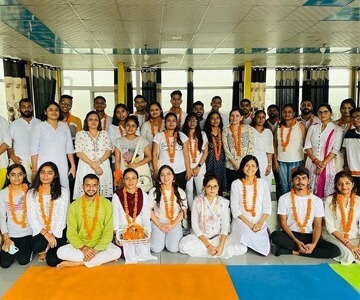
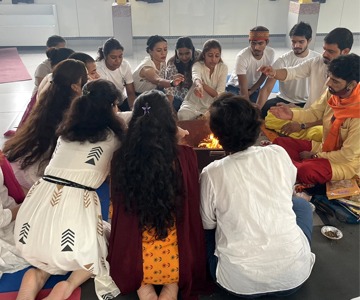
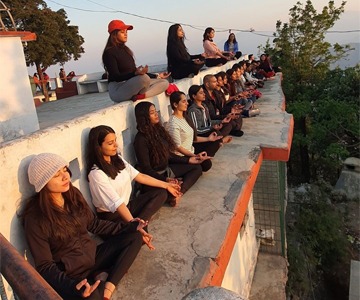

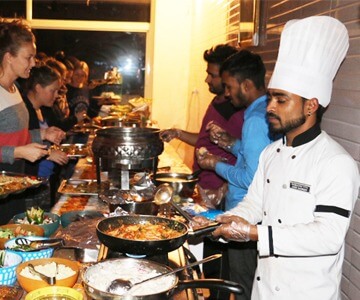
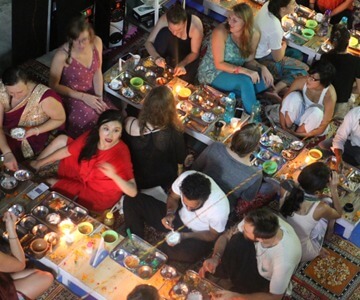
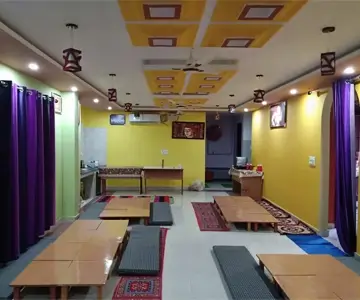
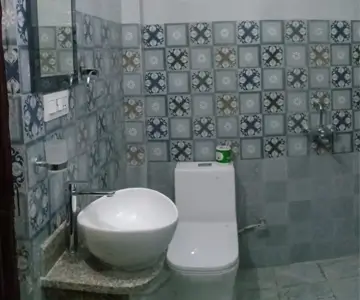
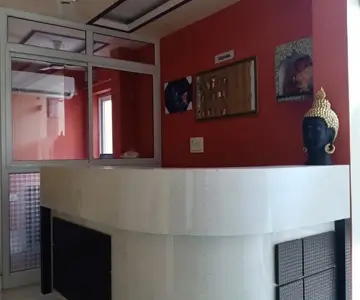
Food & Accommodations
During your 500 Hour KUNDALINI yoga teacher training course, you will be staying at Rishikesh Yoga Teacher Training Center in Rishikesh India. The location of the school is right next to the famous Lakshman Jhula(also known as the hanging bridge) and the holy river Ganges. The school provides a peaceful location to practice yoga as the ashram is situated close to the beautiful green mountains of the Himalayas. Basic amenities like shops, cafes, restaurants, ATMs and organic stores are located close to the ashram
The ashram offers both single and double room sets according to the student’s needs. The rooms are neat and clean and have attached bathrooms with western lavatories and a hot shower.
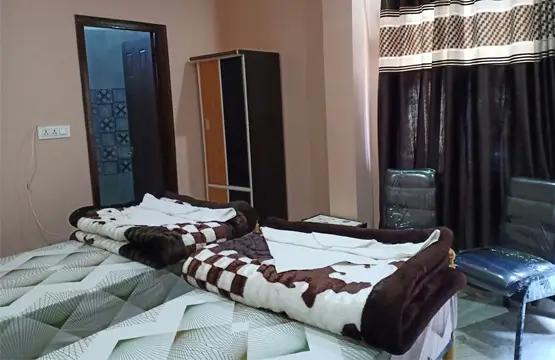
The rooms also have an attached balcony with a beautiful view of the mountains and garden. Bedsheets, pillows, bath towels, toilet paper, blankets, and welcome amenities are provided to the students. Wifi is available on every floor and water and laundry services are also available.
Rishikesh yoga teacher training center also offers budget accommodations. These rooms are separate from the main building and don't have a balcony or mountain view. All of the other facilities are also available in these rooms.
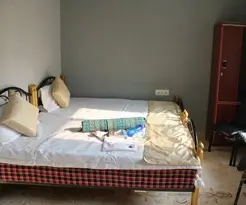
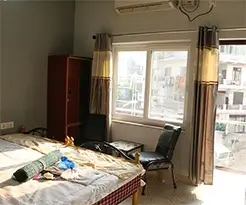
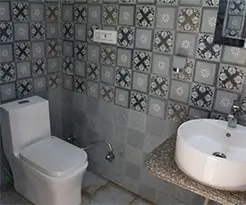
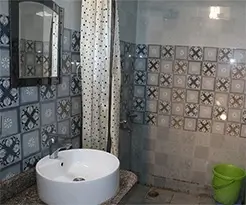
Our food is known all over the globe for its taste and variety. All meals are prepared hygienically by an expert chef and the vegetables used are organically grown. Only vegetarian meals are served and are included in the fees of our 500 Hour KUNDALINI yoga teacher training in India course.
When diet is wrong medicine is of no use. When diet is correct medicine is not needed. ~Ayurvedic Proverb.
Eating the right type of food is an essential part of living a yogic life. Many people think that practising yoga is enough and they don't need to regulate their eating habits. At Rishikesh yoga teacher training centre we believe that yoga is not just an exercise for our mind and body but it is a way of living life. Yoga along with good eating habits can increase the benefits you get from doing yoga.
The food we eat is not only necessary for our physical well-being but also good mental health. The classification of food in the world of yoga is a little different from the scientific world. Instead of classifying food in proteins, fats or carbohydrates, yogic food is classified as - Satva, Rajas and Tamas. Tamasic food makes us feel lazy or sluggish. Rajasic food makes you energetic and may cause restlessness whereas sattvic food makes you feel energetic, enthusiastic and light.

We at Rishikesh Yoga Teacher Training Center focus on the well-being of all our students so, all the students are expected to be on a sattvic diet during their stay at the ashram. Sattvic food helps to purify the body and calm the mind. The menu is designed by Master Chef Sandeep Semwal, with many years of experience in working at five-star hotels all around the globe, Chef Sandeep has a vast knowledge about sattvic diet and focuses on hygienic preparation of food so that it doesn't lose its nutritional value which is necessary for a healthy life. Eating too much or too little food can also cause problems even if you are eating healthy food. Overeating can cause lethargy and laziness and eating less than what you need would not provide you with enough energy for your daily routine. Sometimes we know that our stomach is full but we still eat more because of the taste. It is not possible to calculate the right amount of food someone needs using scales and other measurement techniques as every individual requires a different amount of food to function with full efficiency. So, we just need to listen to our body when it tells us to stop eating
It is said that the state of the mind of the person cooking/ eating also affects the food. The energy in the food cooked by someone while he/she was angry will definitely be lower than that of someone who cooked it with a feeling of love, contentment and gratitude. Listening to some soothing music or chanting while cooking and eating can help retain the Prana (life force energy) in the food. It is definitely worthwhile to pay some attention to the food that we eat as the ancient Indian texts say that we are what we eat!

The following meals are included:
- Breakfast
- Lunch
- Dinner
The following dietary requirement(s) are served and/or catered:
- Vegetarian
- Raw food
- Fruitarian
- Lactose-Free
- Organic
- Yogic
- Ayurvedic
- Other dietary requirements on request
If you have special dietary requirements it's a good idea to communicate it to the organiser when making the reservation.
500 Hour Yoga Teacher Training Course FEES - 2024
| Course | DATES | Shared | Private | BOOK NOW |
|---|---|---|---|---|
| 500 Hour Yoga Teacher Training | 1 May to 28 June | $2600 | $3000 | BOOK NOW |
| 500 Hour Yoga Teacher Training | 1 June to 28 July | $2600 | $3000 | BOOK NOW |
| 500 Hour Yoga Teacher Training | 1 July to 28 August | $2600 | $3000 | BOOK NOW |
| 500 Hour Yoga Teacher Training | 1 August to 28 September | $2600 | $3000 | BOOK NOW |
| 500 Hour Yoga Teacher Training | 1 September to 28 October | $2600 | $3000 | BOOK NOW |
| 500 Hour Yoga Teacher Training | 1 October to 28 November | $2600 | $3000 | BOOK NOW |
| 500 Hour Yoga Teacher Training | 1 November to 28 December | $2600 | $3000 | BOOK NOW |
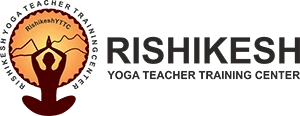




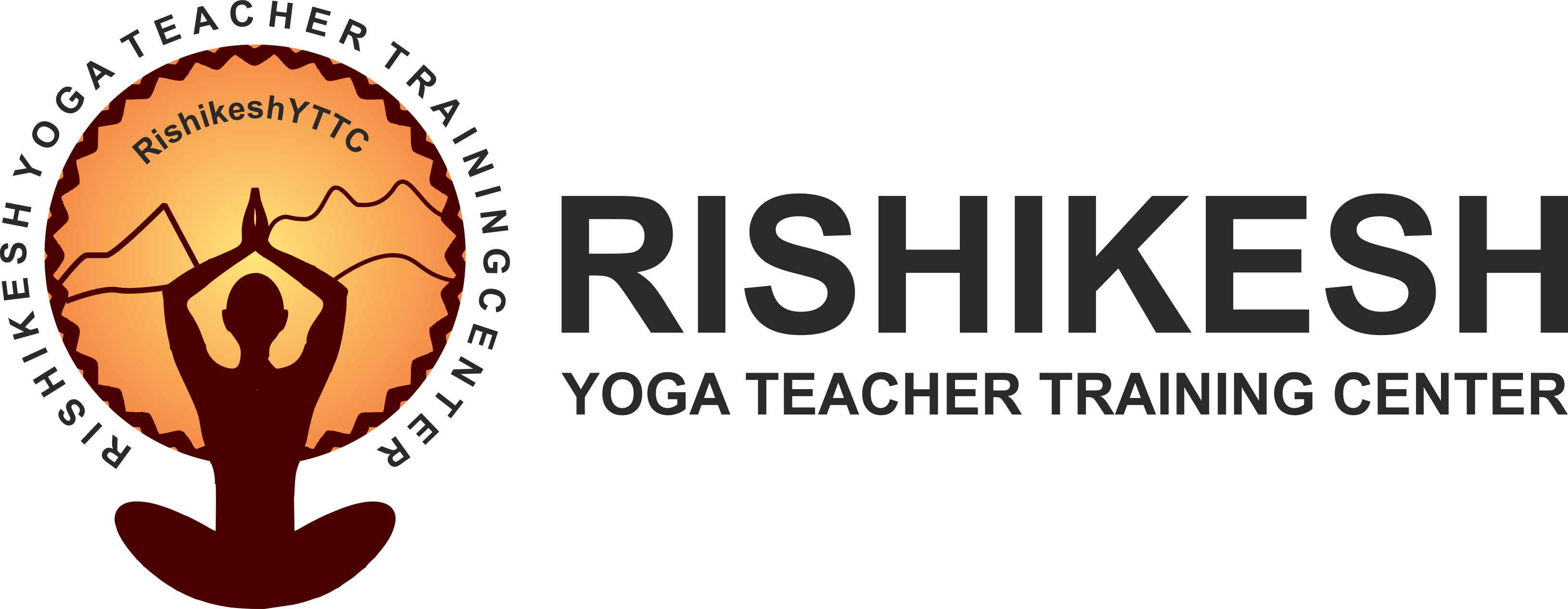
 YOGIC PURIFICATION
YOGIC PURIFICATION